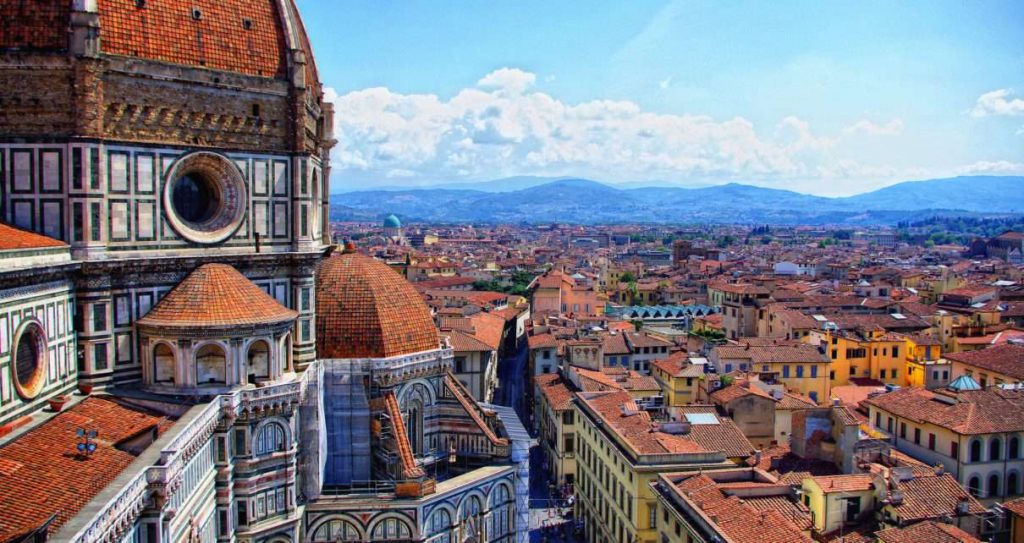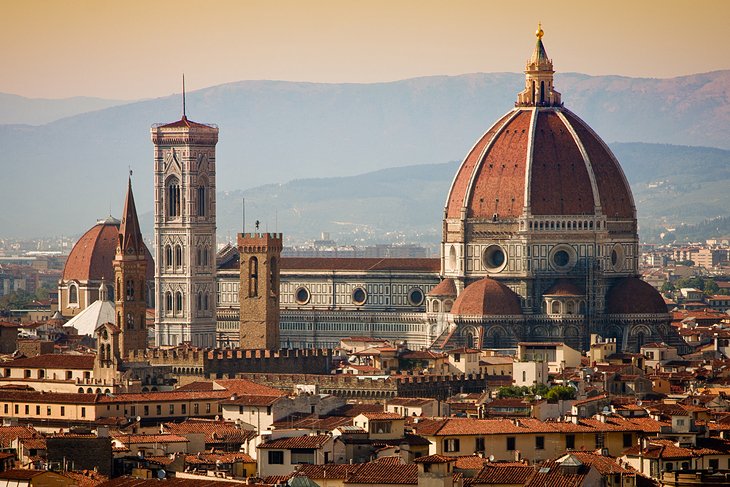Florence is the art capital of Italy
The Ponte Vecchio is the only bridge in Florence that survived World War II. Hitler said it was too beautiful to destroy.
Gucci was founded in Florence in 1921 (Guccio Gucci, the founder of Gucci, was Florentine.)
The Grand Duchy of Tuscany was the first state to abolish capital punishment in November 1786
According to UNESCO, almost a third of the world’s art treasures reside in Florence
Opera was invented in Florence
Florence, (italian: Firenze) – birthplace of the Renaissance, and «the Athens of the Middle Ages». Due to Florence’s artistic and architectural heritage, it has been ranked by Forbes as one of the most beautiful cities in the world.
Famous people from Florence, Firenze, Italy: Leonardo da Vinci, Michelangelo, Niccolo Machievelli, Galileo Galilei, Amerigo Vespucci, Donatello, Raffaele, Roberto Cavalli, and Guccio Gucci, fashion designer and Gucci fashion was founded in Florence 1921.
The best films set in Florence: Tea with Mussolini, A Room with a View, The Stendhal Syndrome, Hannibal.

Open my heart and you will see, Graved inside of it, «Italy.» — Robert Browning
Places you must visit/things to do when in Florence
The Cathedral (Il Duomo) – was begun in 1296 in the Gothic style to the design oflfo di Cambio and completed structurally in 1436 with the dome engineered by Filippo Brunelleschi
Uffizi Gallery – one of the oldest and most famous art museums of the Western world
Ponte Vecchio – is a Medieval stone closed-spandrel segmental arch bridge over the Arno River, in Florence, Italy
Palazzo Pitti – Renaissance palace in Florence
Piazzale Michelangiolo – famous square with a magnificent panoramic view of Florence, Italy
Accademia di Belle Arti Firenze – Founders: Michelangelo, Cosimo I de’ Medici, Grand Duke of Tuscany, Giorgio Vasari
David (Michelangelo) – At the Accademia di Belle Arti Firenze
Interesting facts about Florence (Firenze), Italy
Florentia was invaded by numerous tribes in the following centuries: Goths, «Silicone», Ostrogoths and Longobards. Many inhabitants adopted Christianity at the time of the Silicone, and the first churches appeared outside the Roman walls of Florentia: San Lorenzo and Santa Felicita were built during the 4th Century CE and can be visited today.
Florence has had two floods; one on November 4, 1333 and November 4, 1966.
The Florentines invented both Renaissance and neoclassical architecture, a fact which greatly influenced and revolutionised the way Rome, London, Paris and every other major city in Europe was built.
Opera was invented in Florence.
The emblem of Florence is a red lily, the representation of which derives from the Florentine iris, a white flower that was very common in the local area.
At the time when Florence was a free comune, the city’s emblem was white on a red ground, but following the conflict between the Guelphs and Ghibellines the colours were inverted, resulting in a red lily on a white ground. The emblem has remained virtually unaltered down the ages and the city council still uses it today.
The Medici family were from Florence and were perhaps one of the most important families to have ever lived and one that changed the world more than any other.
Dante, Petrarch, and Boccaccio were the first to use a language other than Latin, namely Tuscan which eventualy became the recognised Italian language. This was the beginning of the end of Latin being used as the common language throughout Europe.
Many famous artists came from around Florence, including Giotto, Uccello, Donatello, Botticelli, Michelangelo and Leonardo da Vinci.



